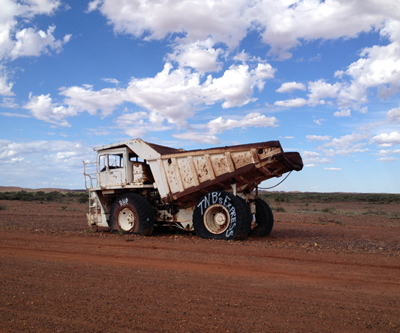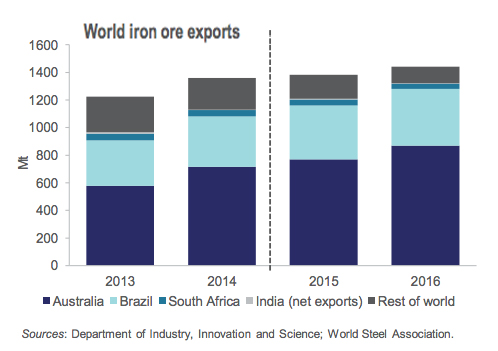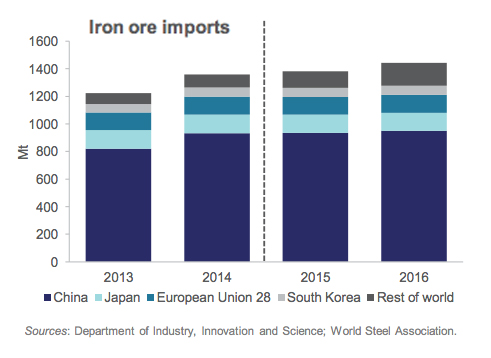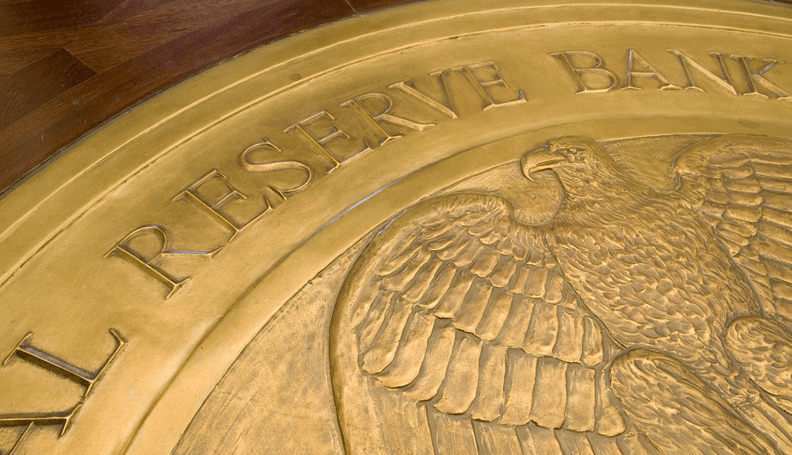Iron ore price predictions keep getting cut

The price of iron ore continued to recover from near decade lows on Tuesday with the Northern China 62% Fe import price including freight and insurance (CFR) adding 2% to just above the psychologically important $40 a tonne level.
The steelmaking raw material has fallen 43% in value this year, following a similar drop in 2014. Today’s price compares to the record high of $190 a tonne hit February 2011 and an average of $135 a tonne in 2013 and $97 last year.
The relentless decline seems to have caught many industry players by surprise.
World number two producer Rio Tinto’s chief executive and long-time iron ore division head Sam Walsh famously called prices in the $30s “fantasy land” in a Bloomberg interview in February when the price was still north of $60 a tonne.
Now Australia’s Department of Industry, Innovation & Science has also had to make deep cuts to its predictions made just three months ago.
On Tuesday, the Australian government forecaster in its latest quarterly report lowered its 2016 iron ore price forecast by 19% and now expects prices to average just $41.30 per tonne next year compared to the $51.20 predicted in September.
The prices used by the department are free-on-board Australia. Freight rates recently fell to record lows and the Australia–China route adds less than $5 a tonne to the price, while from Brazil shipping costs for iron ore are below $10 a tonne.

Source: Australia Dept of Industry
Chinese iron ore imports surged 22% year on year in November to 82.1 million tonnes. Cargoes were up 8.8% compared to October. Imports for the first eleven months were up just 1.3% compared to 2014, but last year was a record breaking year with the country importing 920 million tonnes. Compared to 2014 imports from Australia were up 26% at 51.5 million tonnes while Brazilian cargoes jumped by 48%.
Australia Industry estimates global trade in iron ore increased by 1.8% in 2015 to 1.4 billion tonnes, the lowest rate of growth since 2001. In 2016, world trade in iron ore is forecast to increase by a further 4.5% with increasing supply from Brazil and Australia and an increase in consumption of seaborne iron ore from China due to a fall in domestic production behind the strong growth.

Source: Australia Dept of Industry
Image of roadside dump truck wreck between Mount Augustus and Tom Price by Robyn Jay
More News
Rio Tinto, Founders Factory’s Mining Tech Accelerator invests in startups from US and OZ
April 23, 2025 | 04:02 pm
{{ commodity.name }}
{{ post.title }}
{{ post.date }}



Comments